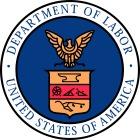 On July 13, 2016, the U.S. Equal Employment Opportunity Commission (EEOC) announced that it has revised its proposal to collect pay data from employers through the Employer Information Report (EEO-1). In response to over 300 comments received during an initial public comment period earlier this year, the EEOC is now proposing to push back the due date for the first EEO-1 report with pay data from September 30, 2017 to March 31, 2018. That new deadline would allow employers to use existing W-2 pay information calculated for the previous calendar year. The public now has a new 30-day comment period in which to submit comments on the revised proposal.
On July 13, 2016, the U.S. Equal Employment Opportunity Commission (EEOC) announced that it has revised its proposal to collect pay data from employers through the Employer Information Report (EEO-1). In response to over 300 comments received during an initial public comment period earlier this year, the EEOC is now proposing to push back the due date for the first EEO-1 report with pay data from September 30, 2017 to March 31, 2018. That new deadline would allow employers to use existing W-2 pay information calculated for the previous calendar year. The public now has a new 30-day comment period in which to submit comments on the revised proposal.
Purpose of EEOC’s Pay Data Rule
The EEOC’s proposed rule would require larger employers to report the number of employees by race, gender, and ethnicity that are paid within each of 12 designated pay bands. This is the latest in numerous attempts by the EEOC and the Office of Federal Contract Compliance Programs (OFCCP) to collect pay information to identify pay disparities across industries and occupational categories. These federal agencies plan to use the pay data “to assess complaints of discrimination, focus agency investigations, and identify existing pay disparities that may warrant further examination.”
Employers Covered By The Proposed Pay Data Rule
The reporting of pay data on the revised EEO-1 would apply to employers with 100 or more employees, including federal contractors. Federal contractors with 50-99 employees would still be required to file an EEO-1 report providing employee sex, race, and ethnicity by job category, as is currently required, but would not be required to report pay data. Employers not meeting either of those thresholds would not be covered by the new pay data rule.
Pay Bands For Proposed EEO-1 Reporting
Under the EEOC’s pay data proposal, employers would collect W-2 income and hours-worked data within twelve distinct pay bands for each job category. Under its revised proposed rule, employers then would report the number of employees whose W-2 earnings for the prior twelve-month period fell within each pay band.
The proposed pay bands are based on those used by the Bureau of Labor Statistics in the Occupation Employment Statistics survey:
(1) $19,239 and under;
(2) $19,240 – $24,439;
(3) $24,440 – $30,679;
(4) $30,680 – $38,999;
(5) $39,000 – $49,919;
(6) $49,920 – $62,919;
(7) $62,920 – $80,079;
(8) $80,080 – $101,919;
(9) $101,920 – $128,959;
(10) $128,960 – $163,799;
(11) $163,800 – $207,999; and
(12) $208,000 and over.
Stay Tuned For Final Developments
The EEOC’s announcement of the revised pay data reporting rule opens a new 30-day comment period, providing a second chance for the public to submit comments on the proposal through August 15, 2016. The EEOC is also formally submitting the proposed EEO-1 revisions to the Office of Management and Budget for consideration and decision. We will keep you posted on any further developments.
Please note that employers required to file an EEO-1 report for 2016 must do so by the normal September 30, 2016 filing date using the currently approved EEO-1 and must continue to use the July 1st through September 30th workforce snapshot period for that report.
Like this:
Like Loading...
 (“CPRs”) using DIR’s online system will resume on August 1. DIR clarified that the requirement to keep CPRs has not changed. Previously, DIR suspended enforcement of filing CPRs electronically because of problems with the system and improvements. However, employers should have continued to maintain CPRs and the ability to file them electronically was operational. The key difference is now DIR will enforce the filing requirement effective August 1st. See press release
(“CPRs”) using DIR’s online system will resume on August 1. DIR clarified that the requirement to keep CPRs has not changed. Previously, DIR suspended enforcement of filing CPRs electronically because of problems with the system and improvements. However, employers should have continued to maintain CPRs and the ability to file them electronically was operational. The key difference is now DIR will enforce the filing requirement effective August 1st. See press release


 On March 23, 2016, the U.S. Department of Labor (DOL) issued a final rule, first proposed in June 2011, requiring employers and their labor relations consultants, including law firms, to
On March 23, 2016, the U.S. Department of Labor (DOL) issued a final rule, first proposed in June 2011, requiring employers and their labor relations consultants, including law firms, to 


